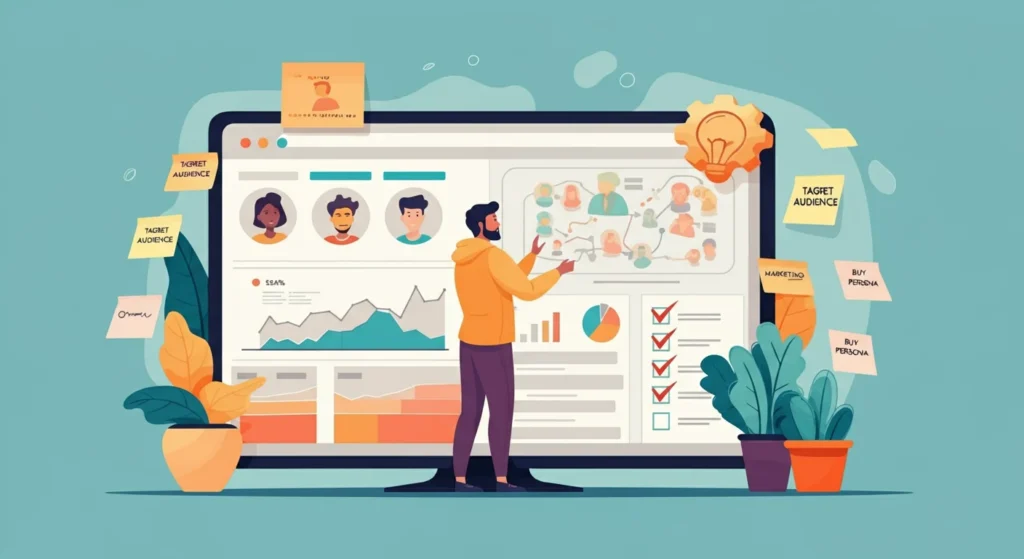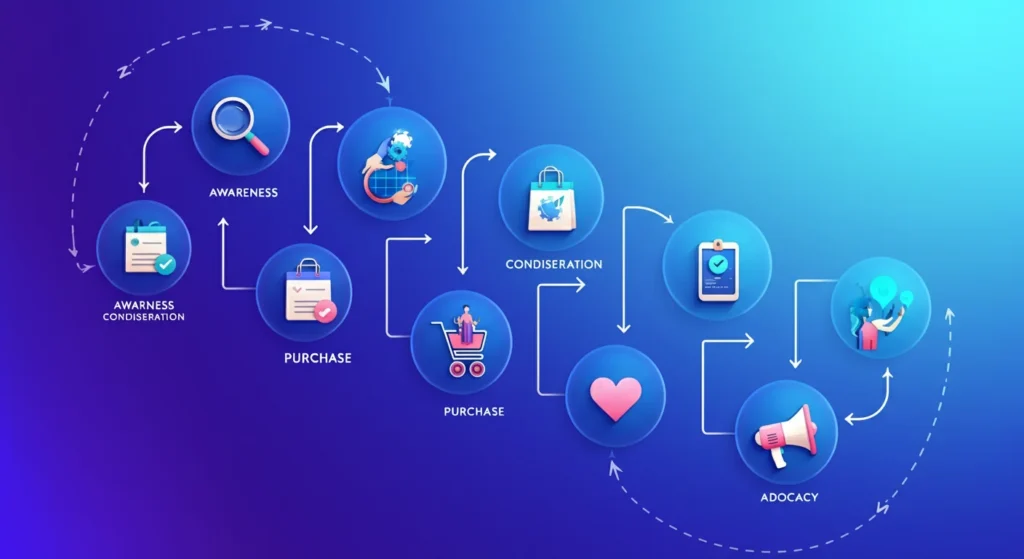Marketing automation has become the backbone of successful digital marketing strategies, yet many businesses struggle to extract its full potential. While 75% of companies use at least one marketing automation tool, only a fraction achieve the efficiency gains they expected when they first invested in these platforms.
The difference between companies that see modest improvements and those that achieve transformative results lies in how they approach workflow optimization. Successful marketing automation isn’t just about setting up campaigns and letting them run—it requires strategic planning, thoughtful design, and continuous refinement.
This guide will walk you through proven strategies for optimizing marketing automation workflows that deliver measurable results. From understanding your audience to measuring success metrics, you’ll learn how to create automated systems that work more efficiently while requiring less manual intervention.
Understanding Your Audience and Goals

Effective marketing automation begins with a clear definition of the target audience and setting specific, measurable goals. Without these foundations, even the most sophisticated workflows will underperform.
Define Your Audience Segments
Your audience isn’t a monolith, and your automation shouldn’t treat them as one. Start by creating detailed segments based on demographics, behaviour, purchase history, and engagement levels. Consider factors like:
- Geographic location and time zones
- Industry or job function
- Stage in the buying journey
- Previous interactions with your brand
- Communication preferences
Each segment should receive tailored messaging that speaks to their specific needs and pain points. A startup founder evaluating project management software has different concerns than an enterprise IT director making the same decision.
Align Workflows with Marketing Objectives
Every automated workflow should serve a specific business goal. Common objectives include:
- Lead Generation: Capturing and qualifying new prospects
- Lead Nurturing: Moving prospects through the sales funnel
- Customer Onboarding: Ensuring new customers achieve early success
- Customer Retention: Maintaining engagement with existing customers
- Upselling/Cross-selling: Expanding revenue from current customers
Define success metrics for each objective before building your workflows. This clarity will guide your design decisions and make optimization efforts more focused.
Mapping Out Your Customer Journey

Customer journey mapping reveals the critical touchpoints where automation can have the most significant impact. This process helps you identify opportunities to provide value while guiding prospects toward conversion.
Visualize Journey Stages
Break down your customer journey into distinct stages:
- Awareness: Prospects discover your brand or solution
- Consideration: They evaluate options and compare alternatives
- Decision: They’re ready to make a purchase decision
- Onboarding: New customers learn to use your product or service
- Advocacy: Satisfied customers become brand champions
Identify Automation Touchpoints
Within each stage, pinpoint moments where automated communication can enhance the customer experience:
- Welcome new subscribers with valuable resources
- Follow up on content downloads with related materials
- Send personalized product recommendations based on browsing behaviour
- Trigger re-engagement campaigns for inactive users
- Request feedback after key milestones
The key is to provide the right message at the right time, rather than overwhelming prospects with constant communication.
Essential Tools for Marketing Automation
Selecting the right platform significantly impacts your workflow optimization potential. Different tools excel in other areas, so consider your specific needs when evaluating options.
Popular Marketing Automation Platforms
HubSpot offers a comprehensive suite of features, including email marketing, lead scoring, and detailed analytics. Its intuitive interface makes it accessible for marketing teams with varying technical expertise.
Marketo provides advanced automation capabilities designed for larger enterprises with complex sales cycles. Its robust lead management features excel at handling high-volume campaigns.
ActiveCampaign combines email marketing with automation tools tailored for small to medium-sized businesses. Its visual workflow builder simplifies the design of complex automation.
Mailchimp has evolved beyond email marketing to include automation features suitable for businesses just starting with marketing automation.
Selecting Tools Based on Business Needs
Consider these factors when choosing a platform:
- Budget: Pricing models vary significantly between providers
- Scalability: Ensure the platform can grow with your business
- Integration capabilities: Seamless connection with existing tools is crucial
- Ease of use: Your team’s technical comfort level affects adoption success
- Support and training: Quality customer support accelerates implementation
Designing Effective Workflows
Well-designed workflows feel personal and helpful rather than automated and intrusive. Focus on creating logical sequences that guide users naturally toward your desired outcome.
Creating Triggers and Actions
Effective workflows begin with specific triggers—events that initiate automated sequences. Common triggers include:
- Form submissions
- Email opens or clicks
- Website page visits
- Purchase completions
- Date-based events (anniversaries, subscription renewals)
Each trigger should connect to relevant actions that provide value to the recipient. For example:
Welcome Email Series: When someone subscribes to your newsletter, trigger a five-email sequence that introduces your brand, shares valuable resources, and sets expectations for future communication.
Lead Nurturing Campaign: When prospects download a whitepaper, initiate a workflow that sends related content over several weeks, gradually introducing more product-focused materials.
Abandoned Cart Recovery: If customers leave items in their cart, send a series of emails with product reminders, customer reviews, and limited-time incentives.
Personalizing Content and Messaging
Personalization extends beyond inserting first names in subject lines. Use available data to customize:
- Content recommendations based on past behaviour
- Send times optimized for individual time zones
- Product suggestions aligned with purchase history
- Industry-specific messaging for B2B audiences
The more relevant your automated messages feel, the higher your engagement rates will be.
Testing and Optimization
Continuous improvement is essential for marketing automation success. Regular testing and optimization ensure your workflows remain effective as your audience and business evolve.
A/B Testing for Workflow Components
Test individual elements systematically:
- Subject lines: Try different lengths, tones, and personalization approaches
- Send times: Test various days and times to find optimal delivery windows
- Content length: Compare short, focused emails with longer, detailed messages
- Call-to-action placement: Experiment with button placement and wording
- Email design: Test different layouts, images, and colour schemes
Focus on testing one element at a time to isolate the impact of each change.
Analyzing Performance Metrics
Track key metrics to gauge workflow effectiveness:
- Open Rates: Indicate subject line and sender reputation performance
- Click-Through Rates: Measure content relevance and call-to-action effectiveness
- Conversion Rates: Show how well workflows drive desired actions
- Unsubscribe Rates: Signal when messaging frequency or relevance needs adjustment
- Return on Investment: Calculate the financial impact of automation efforts
Regular analysis reveals trends and opportunities for improvement.
Real-World Success Stories
E-commerce Brand X implemented an abandoned cart recovery workflow, resulting in a 15% increase in recovered sales within three months. The key was testing different email timing and incentive structures.
SaaS Company Y automated its lead-nurturing process, resulting in a 40% increase in qualified leads. They achieved this by creating separate workflows for different user personas and industries.
Marketing Agency Z enhanced their event promotion workflows, leading to a 25% boost in event attendance. They optimized by testing different reminder sequences and personalization approaches.
Common Pitfalls to Avoid
Learning from common mistakes can accelerate your optimization efforts:
- Over-automation: Not every interaction needs automation. Maintain human touchpoints for high-value prospects
- Ignoring mobile optimization: Ensure emails and landing pages work perfectly on mobile devices
- Neglecting list hygiene: Regularly clean your email lists to maintain deliverability
- Setting and forgetting: Workflows require ongoing monitoring and adjustment
- Generic messaging: Personalization significantly improves performance
FAQ About Optimizing Marketing Automation Workflows
What is marketing automation?
Marketing automation uses software to streamline repetitive marketing tasks, allowing teams to focus on strategy and relationship building while automated systems handle routine communication.
How do I get started with marketing automation?
Begin by defining your goals, mapping your customer journey, and selecting appropriate tools. Start with simple workflows before building more complex automation sequences.
What are the key components of a marketing automation workflow?
Successful workflows include clear triggers, relevant actions, audience segmentation, and defined goals. Each component should work together to guide prospects toward conversion.
How do I measure the success of my marketing automation workflows?
Track metrics like conversion rates, click-through rates, open rates, and ROI. Focus on metrics that directly relate to your business objectives rather than vanity metrics.
Can marketing automation replace human interaction?
No, automation enhances human efforts by handling routine tasks. Personal interaction remains crucial for high-value prospects and complex sales situations.
Maximizing Your Marketing Automation Investment
Optimizing marketing automation workflows requires ongoing commitment to testing, analysis, and refinement. The businesses that achieve the best results treat automation as a strategic initiative rather than a set-and-forget solution.
Start by implementing one or two workflows well rather than launching multiple mediocre campaigns. Focus on providing genuine value to your audience while guiding them naturally toward your business objectives.
Remember that successful marketing automation feels helpful, not intrusive. When done right, your audience will appreciate the personalized, timely communication that automated workflows provide.
Ready to create compelling content for your marketing automation campaigns? Explore our [Platform For Content Creation] to streamline your content development process and ensure consistent messaging across all your automated touchpoints.


